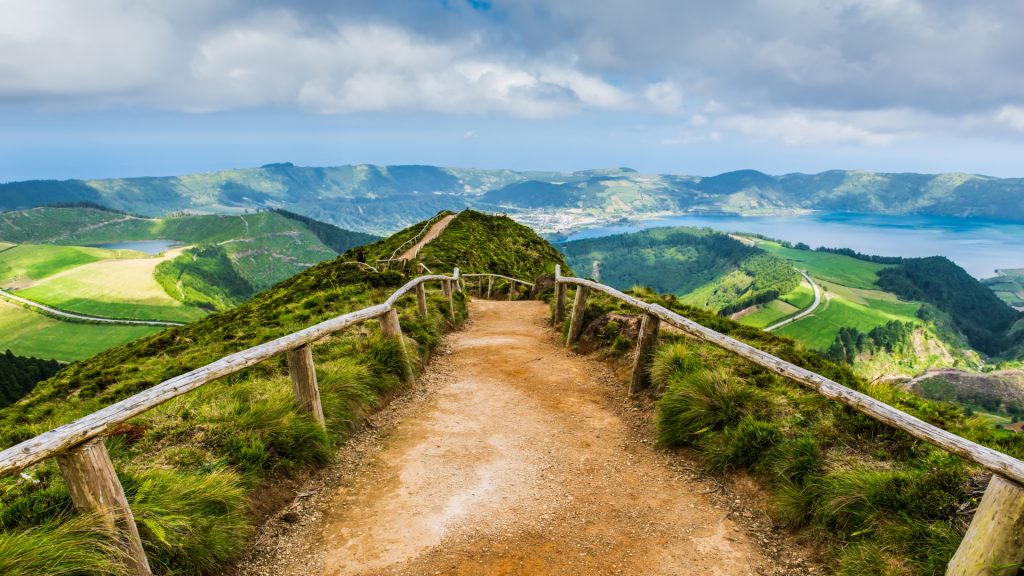The nine-island Archipelago of Azores is situated half-way between the U.S. and Europe, a remote destination that is not easily accessible. With a limited number of flights, the big plus of the Azore is the lack of mass tourism. In addition to the islands’ lush, green landscapes, Azores is noted as one of the 10 best places in the world for both whale watching and sustainable tourism (hiking, mountain climbing, canoeing, and biking). Another great plus here is all of the fresh seafood and fine wines and cheese!
Above Photo: Walking path leading to a view of the lakes of Sete Cidades, Azores, Portugal
Furnas
This area of Sao Miguel is the best location to observe volcanic phenomena, including thermal pools set against a backdrop of a subtropical Atlantic forest. The thermal water pool is considered the centerpiece of Terra Nostra Botanical Garden, which gives visitors a peek into how European forests looked before the Ice Age, as the mild climate here has kept these islands intact and unchanged. Originally formed by outpourings of lava from the ocean floor millions of years ago, the youngest of the islands is only 300,000 years old. When visiting, don’t be deterred by the hot spring bath’s discoloration! Unlike the hot springs we have experienced in Japan and Iceland, the sulfur in the water gives it a muddy look (wearing dark or old swimsuits is recommended). The water ranges in temperature from 95 – 104° F.
Sete Cidades
Sete Cidades is located on the western side of Sao Miguel and boasts a collection of lagoons, it’s most spectacular being the Green and Blue Lagoons. Virtually untouched since the 1930s, a visit here is a truly unique experience. As you bike across the lagoon shore or kayak inside a volcanic crater, you’ll be surrounded by beauty on all sides. One of the most striking scenes is the Sete Cidades crater, which stretches about three miles across, created through thousands of years of volcanic activity and collapses. As you look towards the crater, you can clearly see the vibrant colors of the blue and green lagoons; and as you look to the east, and you can see the rest of Sao Miguel.
Lagoa Fogo
Lagoa Fogo “Lake of Fire” is a crater lake at the center of Sao Miguel, found within the Agua de Pau stratovolcano (a volcano built upon alternate layers of lava and ash). The lake can be reached via a nearly eight-mile hike that we strongly feel is worth the long journey. Beautiful views of the town of Vila Franca do Campo and the neighboring beach, Ribeira da Praia can be found here.
Nordeste “Northeast”
This municipality is arguably one of the most attractive on the island of Sao Miguel. Almost completely covered with trees and lush vegetation, the landscape is truly remarkable. Mostly untouched by modern development, this small oasis situated at the north-eastern tip of the island is perhaps the least visited part of the island. This stopover gives visitors a chance to see Azorean life as it has always been in a serene and peaceful environment.
